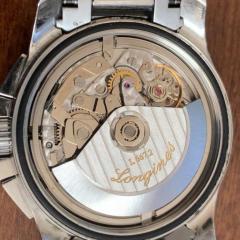-
Recently Browsing
- No registered users viewing this page.
-
Topics
-
Posts
-
Now I'm completely confused, it would appear that the epilame is oleophobic as @Marc states: This oleophobic behavior can be seen as beading of the droplet (as above) which stops the oil spreading which is supported by what we observe on treated/untreated cap stones (for example), but as @VWatchie states this should make the drops more mobile, and not less mobile which is the opposite of what we want. In fact this beading and high mobility are desirable properties in things like smart phone covers, see below. I am fairly sure that epilame doesn't make the droplets more mobile, so maybe its a strange coating with dual properties that are both oleophobic and cohesive/adhesive resulting in low mobility?? This may explain the high price??
-
By nickelsilver · Posted
The description there is exactly how it's done, and it's very well written! -
By HectorLooi · Posted
Would it be correct to say that the stronger the mainspring, the thicker the oil should be? So for a fusee mainspring, should a thick grease be used? -
I started on pocket watches as they are easier to work on than wristwatches. Many had gold cases, which is why there are so many movements for sale. I was always on the look out for cases, for as Nickelsilver says, a 16s movement will fit any 16s case* (with tweaks to the stem). I also started hand winding mainsprings, before I had winders. It can be done without damage, but it's quite hard on the fingers. But you can make homemade winders, see here * some movements, eg "railroad grade", have a setting lever on the edge of the dial at about the 1 -2 o'clock, so need a special case.
-
By transporter · Posted
Ok, on your movement plate you can see a star wheel on the right, this is the silencer, if you rotate the hands by hand through each hour you will see that eventually it acts upon the cam which moves the lever and in turn lifts the lifting lever thus stopping the chimes and strike working. What you need to do is get your clock to 11pm and also turn the star until the cam lifts the lever and stops the action. The star wheel has a small spring that gives it a positive action between each movement, so once at 11pm you can rotate the star wheel around by hand until it stops the action at 11pm. Hope this makes sense to you.
-







Recommended Posts
Join the conversation
You can post now and register later. If you have an account, sign in now to post with your account.
Note: Your post will require moderator approval before it will be visible.